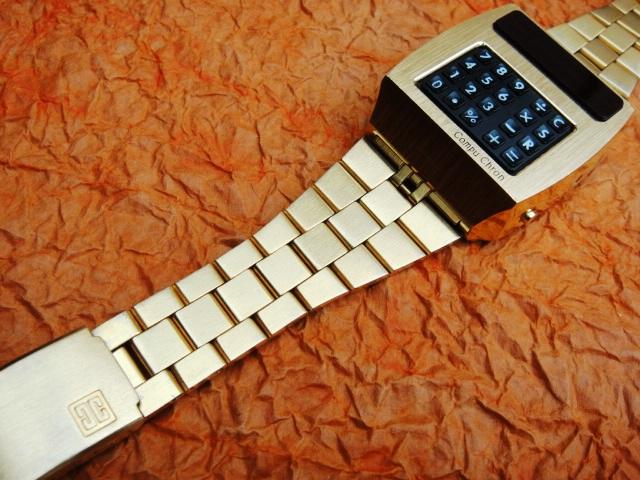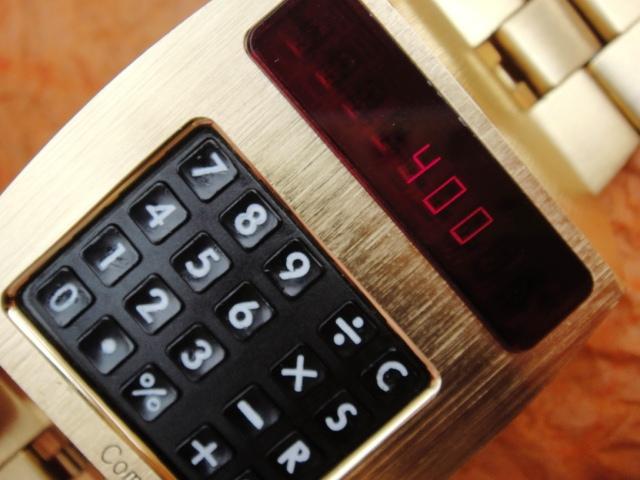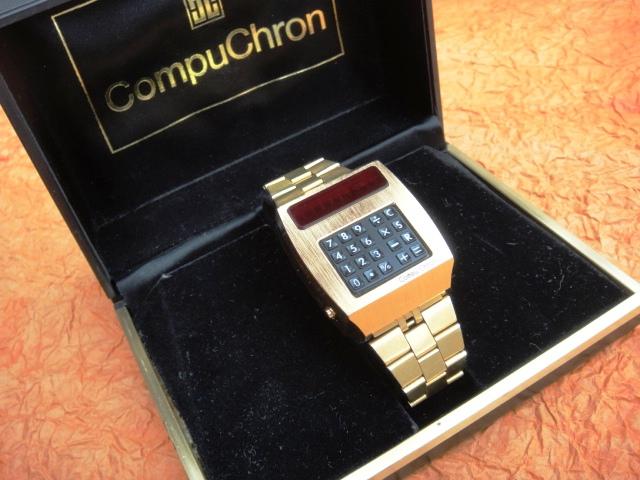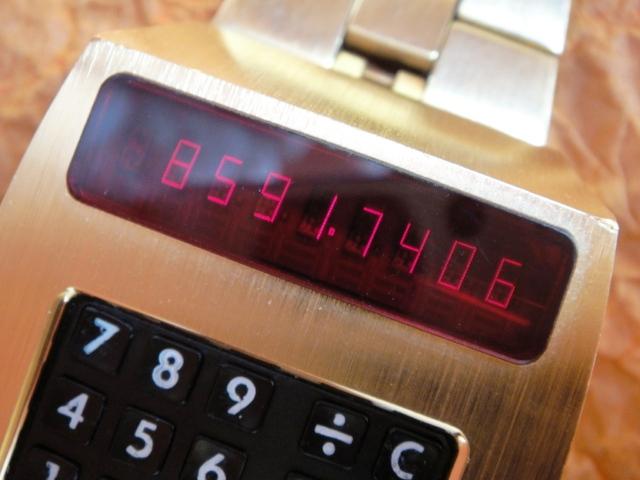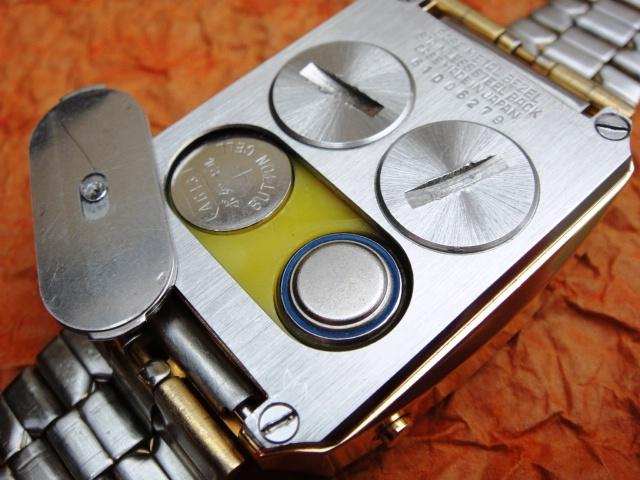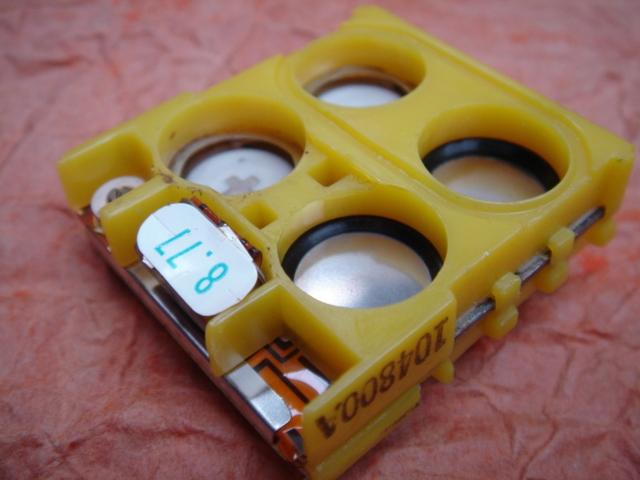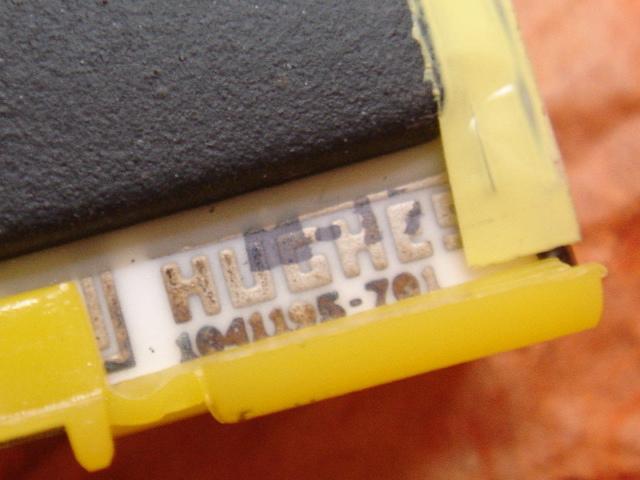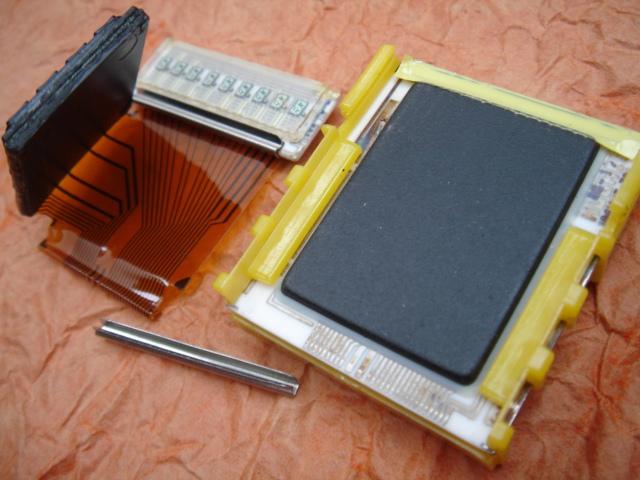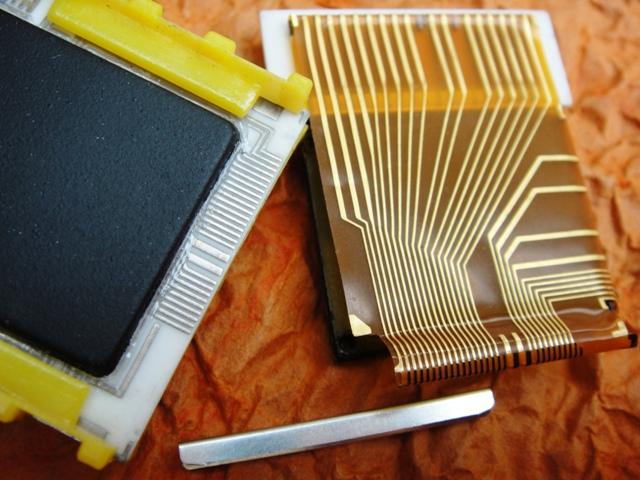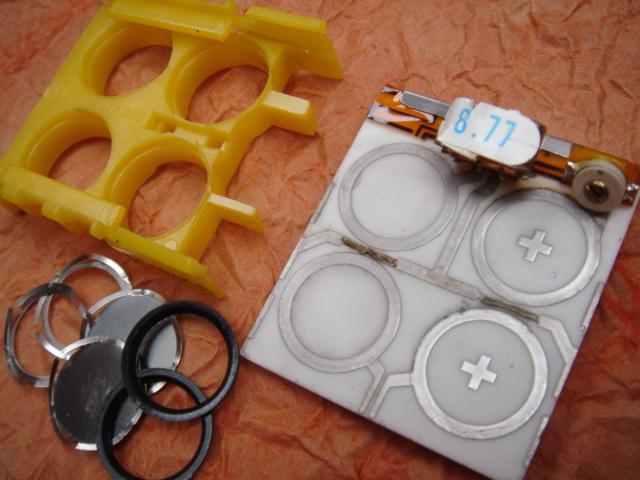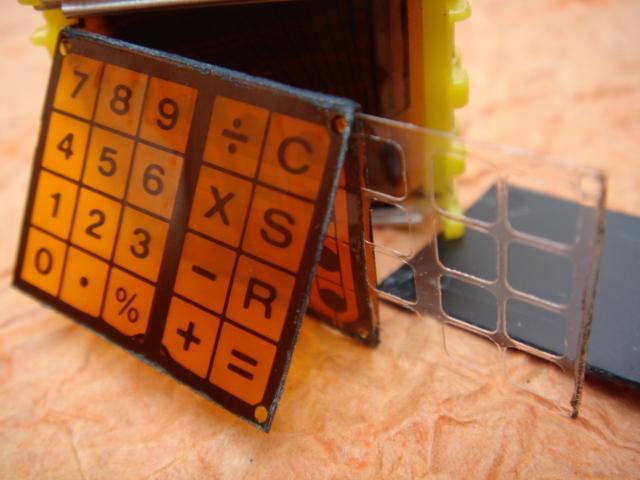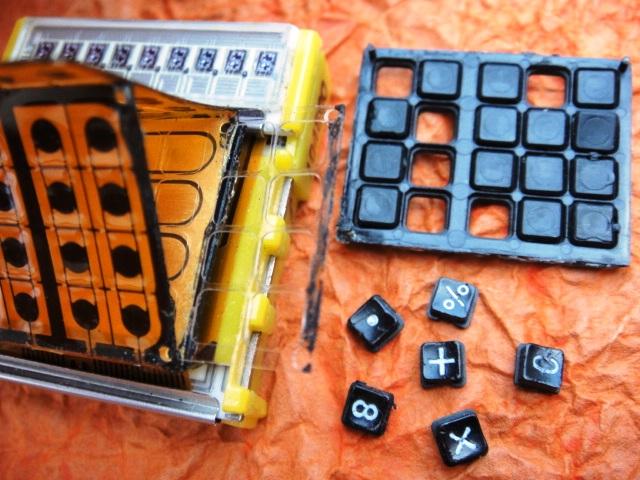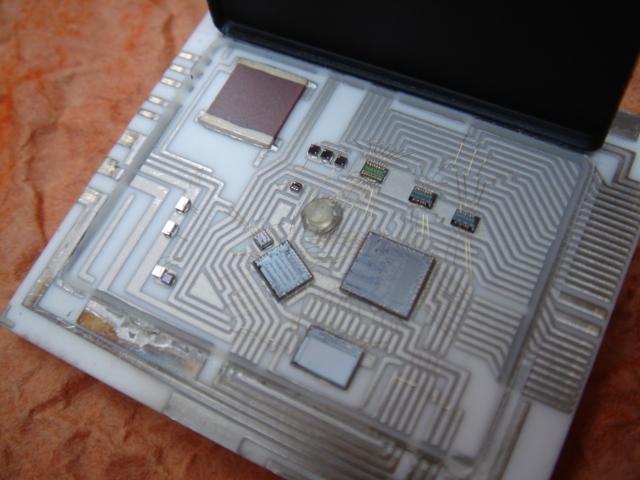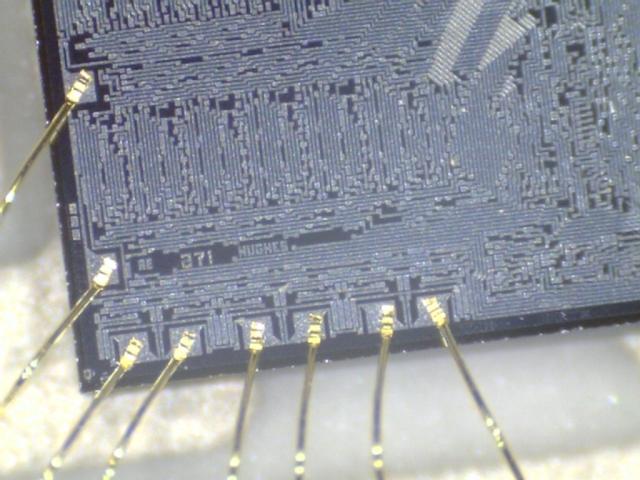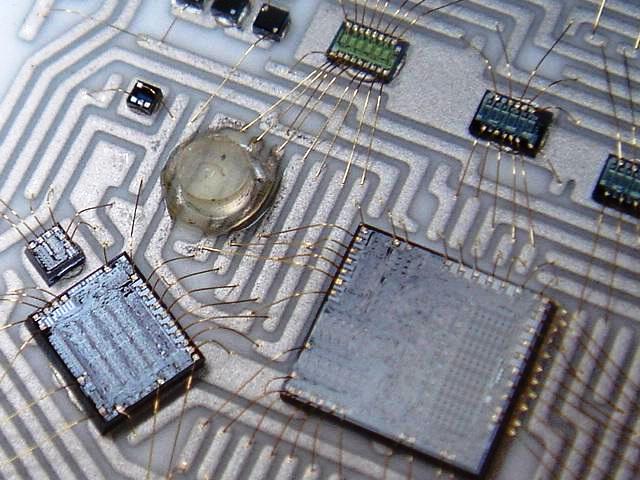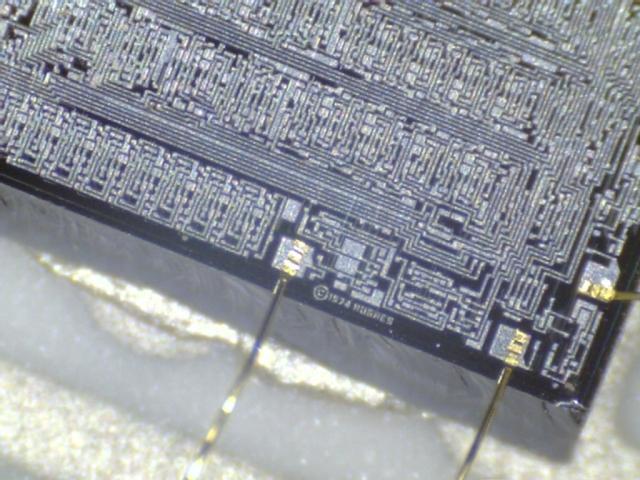COMPUCHRON HUGHES AIRCRAFT CALCULATOR LED 1976
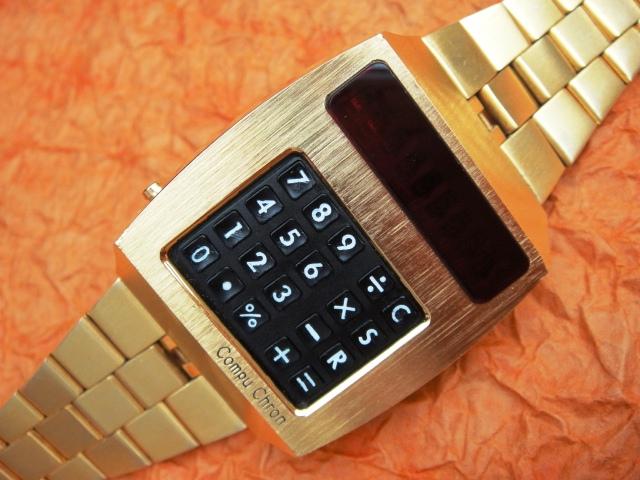 The Hughes Aircraft Calculator was marketed by the watch division of Howard Hughes Corporation which was one of the biggest LED module suppliers for Wittnauer, CompuChron, LeCoultre and more. The company launched the calculator as a cheaper competitor to the Pulsar product and most of them were branded and sold by CompuChron. Small batches signed Hughes or without any signature were sold among Hughes' employees in the factory outlet stores. The Hughes calculator is a lot less complicated in comparison to Pulsar and is not even near in terms of quality. There are no floating decimals, no flick-wrist function, no day of week only day of month. IMO it is not worth the money it sells for but is very collectible due to association with the famous 1978 science-fiction TV series Battlestar Galactica.
The Hughes Aircraft Calculator was marketed by the watch division of Howard Hughes Corporation which was one of the biggest LED module suppliers for Wittnauer, CompuChron, LeCoultre and more. The company launched the calculator as a cheaper competitor to the Pulsar product and most of them were branded and sold by CompuChron. Small batches signed Hughes or without any signature were sold among Hughes' employees in the factory outlet stores. The Hughes calculator is a lot less complicated in comparison to Pulsar and is not even near in terms of quality. There are no floating decimals, no flick-wrist function, no day of week only day of month. IMO it is not worth the money it sells for but is very collectible due to association with the famous 1978 science-fiction TV series Battlestar Galactica.
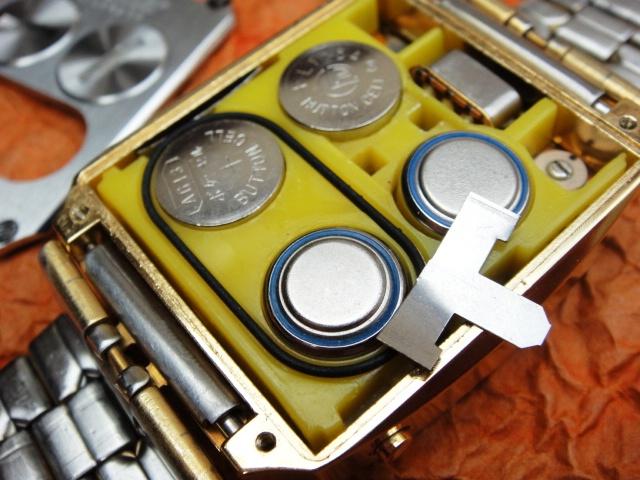 All Hughes calculators are made of cheap plated basemetal with stainless steel back. The keypad is also cheap made of plastic. One advantage is the button size thus the calculations can be easily made with a fingernail, first by pressing C to activate the mode. The red display filter has a magnifying function and is made of ... plastic. Just like the Pulsar the Hughes was also fitted with four (!!!) 357 batteries - two to power the calculator logic and two for the watch display. The watch must have been very battery hungry as the two bottom batteries that power the display are held in place with a large hatch that can be quickly and easily removed with a finger nail but the hatch might also be easily lost if not secured properly. The top battery hatches are screwed on and removed with a coin.
All Hughes calculators are made of cheap plated basemetal with stainless steel back. The keypad is also cheap made of plastic. One advantage is the button size thus the calculations can be easily made with a fingernail, first by pressing C to activate the mode. The red display filter has a magnifying function and is made of ... plastic. Just like the Pulsar the Hughes was also fitted with four (!!!) 357 batteries - two to power the calculator logic and two for the watch display. The watch must have been very battery hungry as the two bottom batteries that power the display are held in place with a large hatch that can be quickly and easily removed with a finger nail but the hatch might also be easily lost if not secured properly. The top battery hatches are screwed on and removed with a coin.
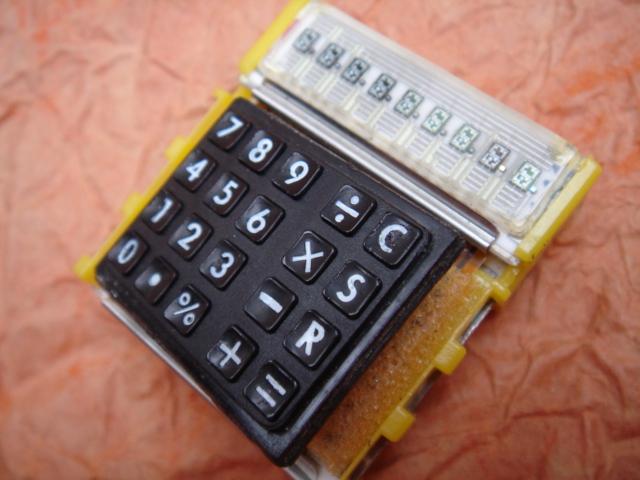 The Hughes calculator is a bit over-engineered and might cause malfunction if parts are not assembled properly. The conductive tapes are fixed with metal clamps to the ceramic substrates and must provide excellent conductivity on each single trace. Many Hughes calculators have a non-working calculator mode either due to permament damage of circuitry or due to dirty buttons that can be cleaned for proper connectivity. As pictured - the calculator pad is made of a triple-layer flexible conductive tape that is covered with plastic buttons. The complete keypad assembly is glued at the edge and can be opened like a sandwich without much effort. The tape should be examined for broken traces and cleaned/brushed if dirty or oxidated. The transparent plastic button spacer should be alligned if necessary.
The Hughes calculator is a bit over-engineered and might cause malfunction if parts are not assembled properly. The conductive tapes are fixed with metal clamps to the ceramic substrates and must provide excellent conductivity on each single trace. Many Hughes calculators have a non-working calculator mode either due to permament damage of circuitry or due to dirty buttons that can be cleaned for proper connectivity. As pictured - the calculator pad is made of a triple-layer flexible conductive tape that is covered with plastic buttons. The complete keypad assembly is glued at the edge and can be opened like a sandwich without much effort. The tape should be examined for broken traces and cleaned/brushed if dirty or oxidated. The transparent plastic button spacer should be alligned if necessary.
All parts of the module are assembled in a certain sequence and held together in a yellow plastic carrier. At first you should remove the steel clamp that holds the keypad assembly (keys, conductive tape, display substrate and quartz crystal). The clamp holds firmly and must be safely removed by slowly lifting it by the sides so that the ceramic will not break or chip. Once the clamp is gone you can easily slide the display, tape and keypad from the plastic carrier. The top display substrate rarely has to be unclamped from the flexible tape whereas the quartz crystal can easily be pulled out from the tape and exchanged as the quartz feet are mounted with silver epoxy. Soldering the quartz will require some experience and quick application so that the plastic tape will not burn or loose shape.
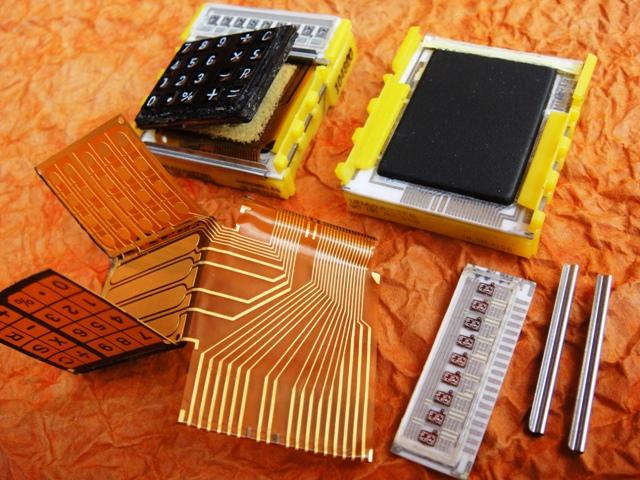 The main ceramic substrate is slid into the plastic carrier and contains all the circuitry that is covered with a black metal plate. This plate is tightly fixed with silicone and secures the chips from any kind of battery leakage. It should not be removed unless the module doesn't work properly. Usually internal and permanent chip failure is the cause of serious malfunction so it is worth to examine if some wirebonding is required with the help of silver epoxy. All together there are so many issues that have to be considered with a Hughes calculator that it is rarely worth the effort: bad quartz, battery connectivity, keypad connectivity, conductive tape connectivity, proper connection with clamps, wirebonding... one of these or all of them :)
The main ceramic substrate is slid into the plastic carrier and contains all the circuitry that is covered with a black metal plate. This plate is tightly fixed with silicone and secures the chips from any kind of battery leakage. It should not be removed unless the module doesn't work properly. Usually internal and permanent chip failure is the cause of serious malfunction so it is worth to examine if some wirebonding is required with the help of silver epoxy. All together there are so many issues that have to be considered with a Hughes calculator that it is rarely worth the effort: bad quartz, battery connectivity, keypad connectivity, conductive tape connectivity, proper connection with clamps, wirebonding... one of these or all of them :)
Keywords: compuchron led, compu chron calculator, hughes calculator
Market value: 150-750$ (model, condition, box)

